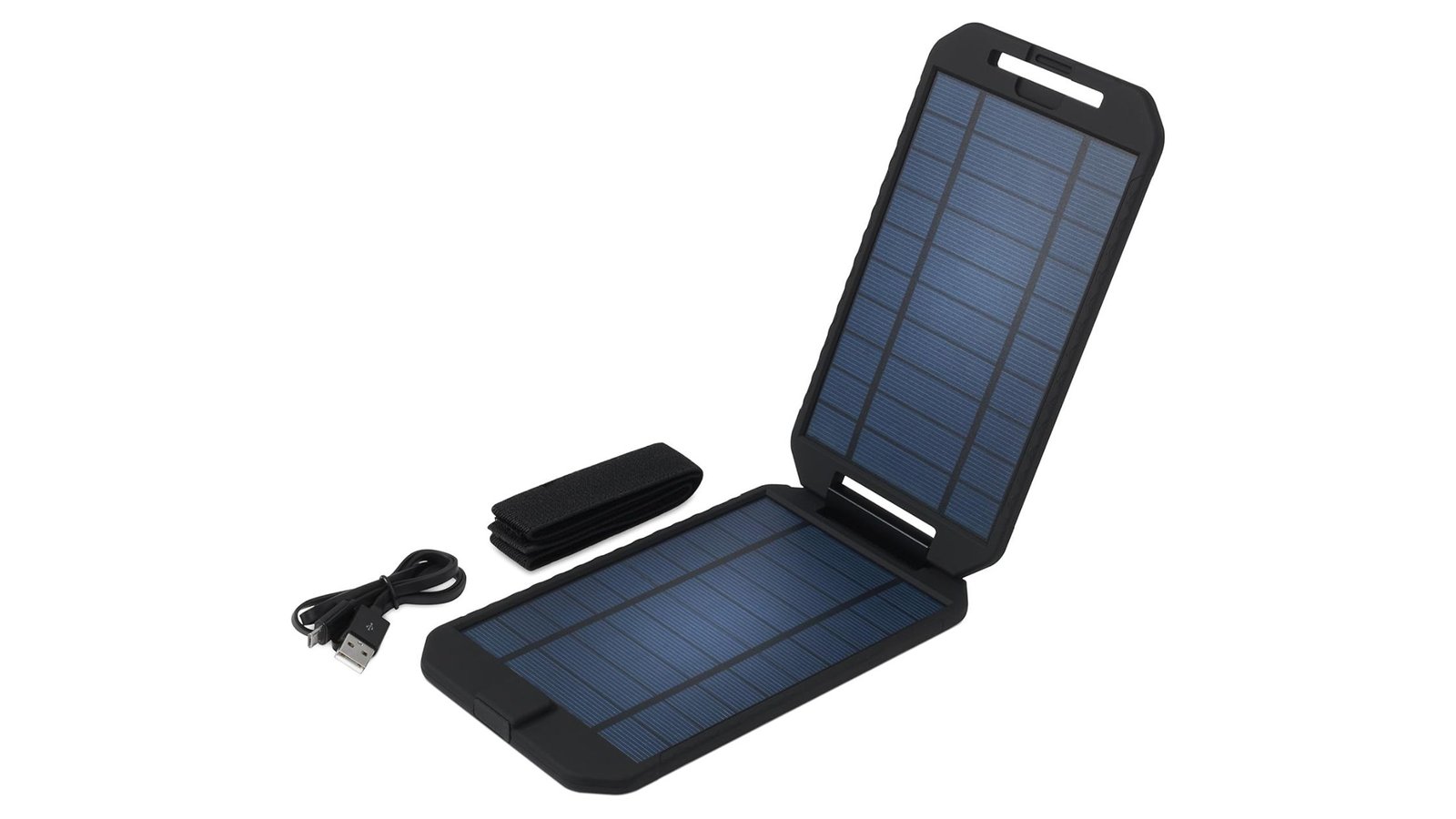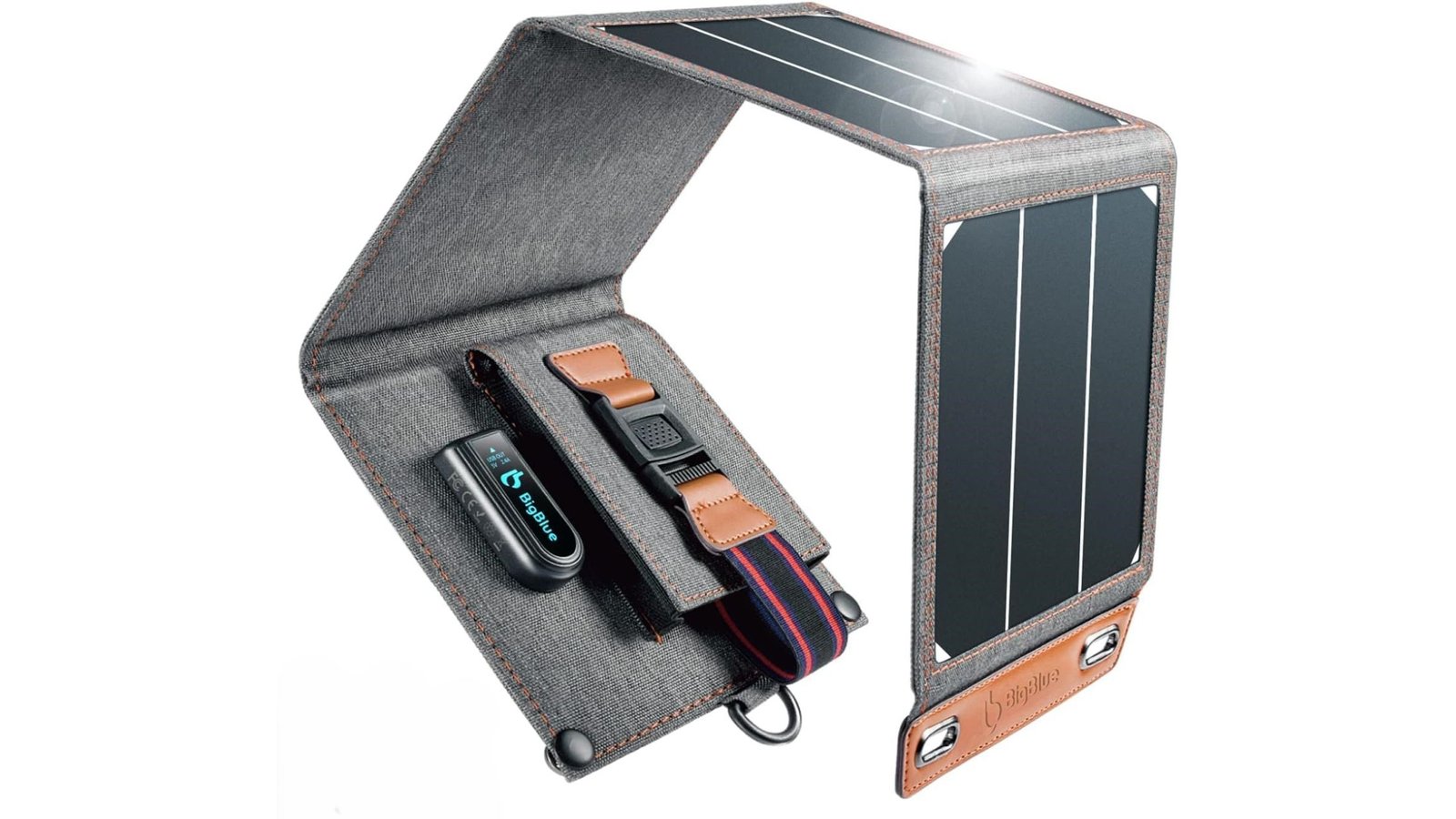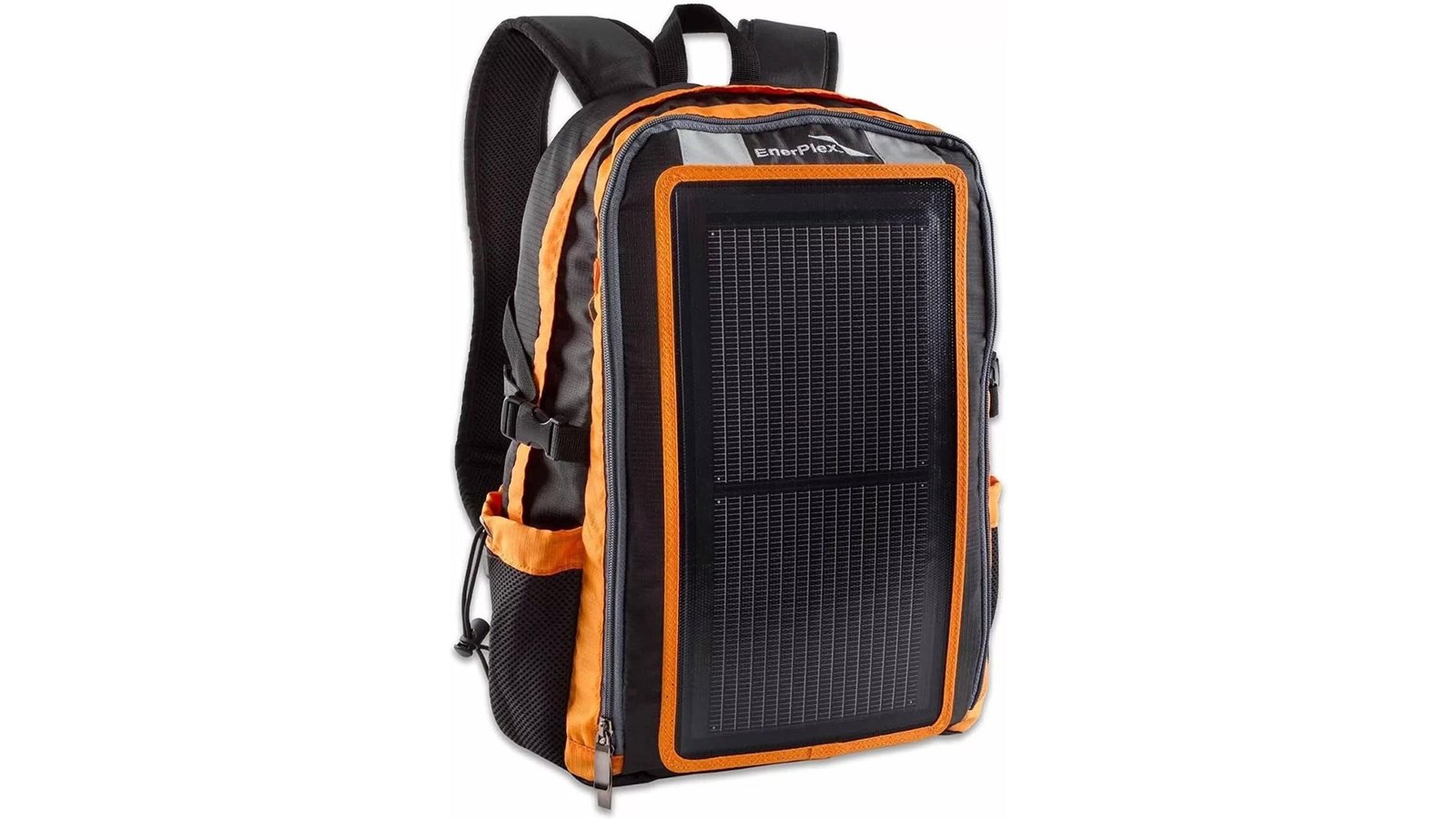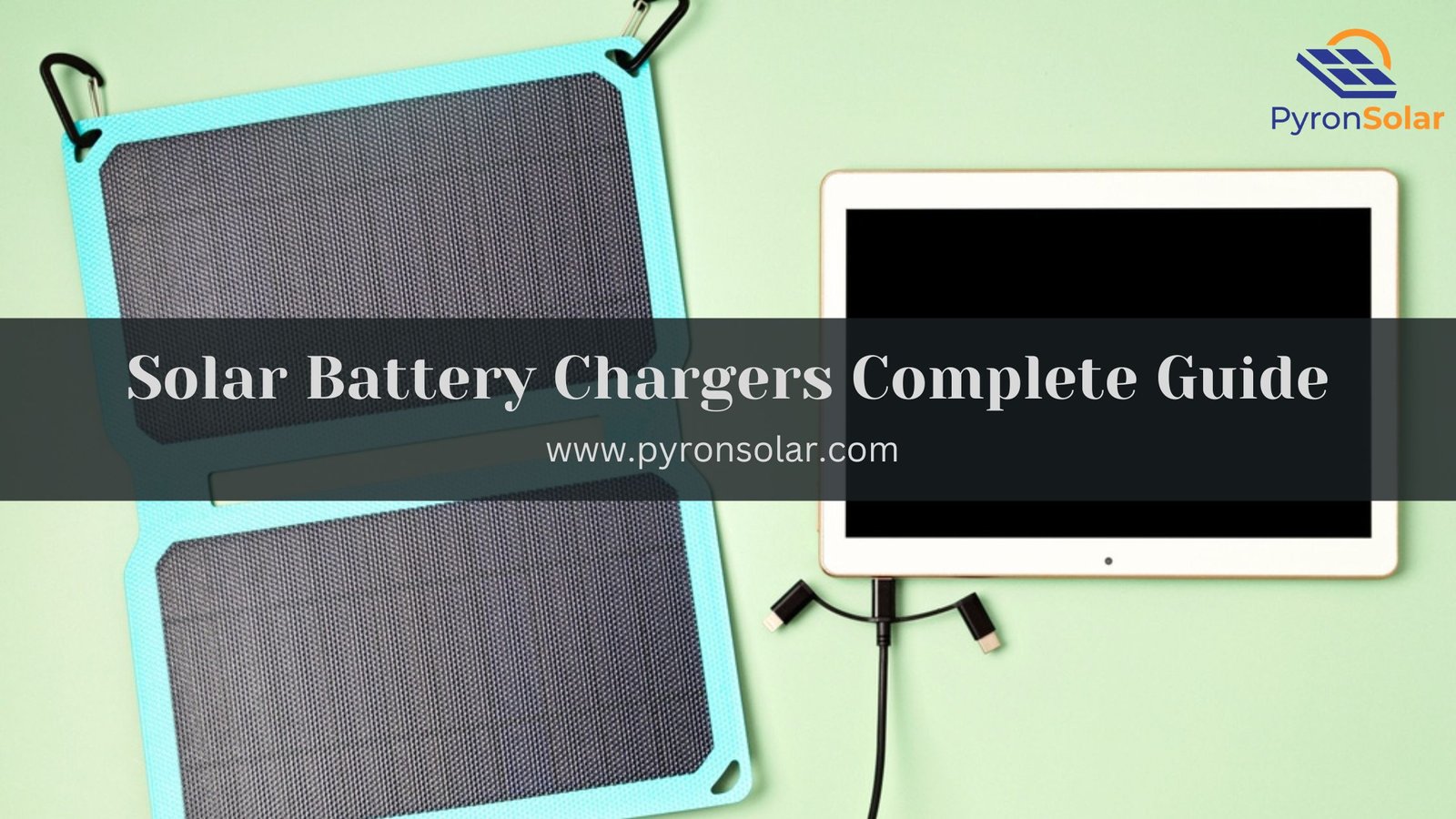Solar battery chargers are portable and environmental friendly devices that absorb solar energy to generate electricity, which is used to charge batteries or power supply devices.
In recent times, solar chargers have become an integral part of the power system to harness solar energy due to their safe and efficient manner of charging electronic devices. Also, the latest technological advancements make these chargers loaded with several benefits over the routine charging methods such that they are easily portable and help reduce carbon emissions as well as your electricity bill costs in the long run.
Before you learn about the different types of solar battery chargers, you need to understand their working process to determine if they match your long-term suitability.
How Solar Battery Chargers are Different?
Solar battery chargers differ from conventional charging methods based on the following ways:
- Energy Source: Solar chargers use sunlight to generate power for charging devices. In contrast, traditional chargers depend upon electrical supplies from the grid or generators for power.
- Adaptability: Solar chargers are adaptable in outdoor settings, which is much better than the standard chargers that are accessible in the electrical outlets.
- Reliability: Solar chargers are completely reliable in sunlight, causing inconsistency in power generation. However, you can depend on orthodox chargers as long as you have access to electrical power sources.
- Charging Speed: The charging speed of solar chargers can be slower at times and can be affected by poor weather conditions. Contrarily, regular chargers have faster and more consistent charging speeds.
Solar chargers have been specially designed for solar batteries to store the energy generated by the PV panels. Also, devices such as laptops, car batteries, smartphones, tablets, torchlights, lamps, and countless other portable devices provide a convenient power source for outdoor enthusiasts and travelers. Additionally, solar chargers are integrated into electric vehicles (EVs) and recreational vehicles (RVs), thereby reducing dependence on the electrical grid and ensuring environmentally conscious transportation.
How do Solar Battery Chargers Work?
To understand the workings of a solar battery charger, you need to get familiarized with the key components. The main elements found within a solar charger include solar panels, charge controllers, batteries, USB ports, and inverters.
Here is the step-by-step sequence of how solar battery chargers convert sunlight into electricity for charging devices and the crucial role of photovoltaic cells, charge controllers, and inverters in the entire process:
1. Capturing Sunlight: Numerous solar cells (known as photovoltaic cells) work together to form a solar panel, that is positioned carefully such that it is exposed to maximum sunlight to capture photons from the sun’s rays, which is converted to electricity.
2. Optimize the electricity flow: A solar charge controller helps to stabilize and improve the electricity flow between the solar panels and the battery. Most importantly, it guarantees that the battery isn’t overcharged or discharged due to too much power input.
3. Energy Storage: Typically, a Solar battery acts as a storage device for the electricity produced by solar panels to store energy during extreme sunlight and supplies power to electrical appliances during cloudy, power outages, or blackouts.
4. Direct Charging of Electrical Devices: Most often, solar chargers are connected to USB ports to allow hassle-free charging of electrical equipment. Finally, the electricity transfer from the charger to the devices is completely possible through a connection point provided by these USB ports.
5. DC-to-AC electricity conversion: An inverter converts the stored DC electricity in the batteries and converts it into usable AC electricity to power all the home appliances.
Benefits of Using Solar Battery Chargers
Solar battery chargers are an alternative to traditional battery chargers offering several benefits such as:
1. Price: Solar battery chargers are one of the budget-friendly ways to charge your devices that save your electricity bills and require minimum maintenance costs.
2. Durability: One of the huge benefits of solar batteries is that they are durable, waterproof, and perform well during cloudy or rainy seasons. The durability of solar chargers guarantees a longer lifespan compared to traditional chargers.
3. Portability: The lightweight design of solar chargers is compatible, making it easier for travelers in rural and urban areas to manage their outdoor activities even during power cuts.
4. Environmental Benefits: Using the sun’s energy, solar chargers offer a clean and renewable energy source, reducing carbon footprint.
Types of Solar Battery Chargers
Here are the few popular solar battery chargers listed below:
1. Automotive Solar Trickle Chargers:

- Working: These chargers are placed on the dashboard. The solar trickle chargers are connected to the battery through a cigarette lighter adapter or directly to the battery terminals.
- Benefits: Easier to operate, reduces the requirement of external power sources.
- Drawbacks: Slow charging, reduced efficiency in cloudy or rainy conditions, do not have big-sized solar panels to charge a battery.
2. Clamshell Solar Chargers:

- Working: These chargers capture energy through solar panels and convert it into electrical energy, which can be used to charge devices via electrical ports.
- Benefits: Easy to carry and charge phones, manufactured with multiple plugs and adaptors making it easier to use for different devices
- Drawbacks: Suitable only for smaller devices with limited power output.
3. Folding Solar Chargers:

- Working: Unfolding the solar chargers helps to gain sunlight exposure to solar panels and can charge larger devices or multiple devices at once.
- Benefits: Highly efficient, easy to set up and transport.
- Drawbacks: Slow charging speed, costly compared to other modules.
4. Solar Bags:

Solar bags are backpacks filled with solar panels that allow you to charge devices while traveling.
- Working: Converts sunlight into electricity and charges devices through built-in USB ports.
- Benefits: Best for outdoor activities.
- Drawbacks: Reduced efficiency during low light conditions.
Overall, consumers can choose the best option for their needs by considering certain factors such as device compatibility, portability, power output, durability, and budget.
Uses of Solar Battery Chargers
These are the main uses of solar battery chargers:
1. Portable Solar Chargers for Smartphones and Other Gadgets:
Portable solar chargers are small and lightweight devices used to charge electronic devices such as smartphones, tablets, cameras, and power banks. Additionally, they are suitable for outdoor activities such as camping, hiking, and traveling, where the accessibility to electrical circuits is restricted.
These are the benefits of using portable solar chargers:
- Ability to provide continuous power supply as long as the sunlight is available.
- Foldable designs make them easily portable in a bag, seat-back pocket, or emergency kit.
- Has a large surface area to capture enough sunlight and generate electricity.
2. Vehicles: Solar chargers are used for electric vehicles (EVs) that require 120V or 240V sources of electricity for charging. There are three levels of EV charging through solar batteries namely:
- First Level: Slowest method of EV charging (emergency or trickle charging).
- Second Level: Best charging solutions.
- Third Level: Fastest level of charging.
These are the benefits of solar chargers for electric vehicles:
- Helps to lower charging costs.
- Ensure zero carbon emissions.
- Lower the dependence on fossil fuels.
3. RV (Recreational Vehicles): The RV solar battery chargers are one of the best options to power your recreational vehicles by converting sunlight into electricity.
Here are the benefits of RV solar battery charger:
- Provide power in areas where electricity is not available.
- Protects lead acid and AGM batteries by cutting down the voltage.
4. Yachts and Boats: Solar battery chargers are used for the battery system of boats and yachts that range from small trickle chargers to thousands of watts to power your boat’s electrical requirements.
Here are the main benefits of using solar battery chargers for yachts and boats:
- Resist harsh weather conditions.
- Requires little or no maintenance to minimize expenses.
- Silent and doesn’t require continuous refueling.
Who are Solar Chargers Suitable For?
Portable solar chargers are suitable for individuals such as hikers and campers, remote workers, homeowners, photographers, and many others.
The usage frequency and device needs influence the choice of charger size. Suppose you’re one such user who uses the solar battery charger frequently to satisfy the requirements of your device. In that case, you require higher-wattage solar panels to charge devices faster and more efficiently. You need to know that huge battery capacity helps you to store more solar energy. Whereas, light-weighted small batteries can be a great backup energy source for outdoor activities to charge devices such as smartphones or cameras.
Integrating solar chargers into various lifestyles results in sustainable energy practices by eliminating the need for disposable batteries, reducing the carbon footprint, minimizing dependence on the grid, encouraging users to adopt renewable energy sources, and several other benefits.
Overall, solar battery chargers are a reliable power source during emergencies and minimize severe impacts on the environment.
Ray is an avid reader and writer with over 25 years of experience serving various domestic and multinational private and public energy companies in the USA.

